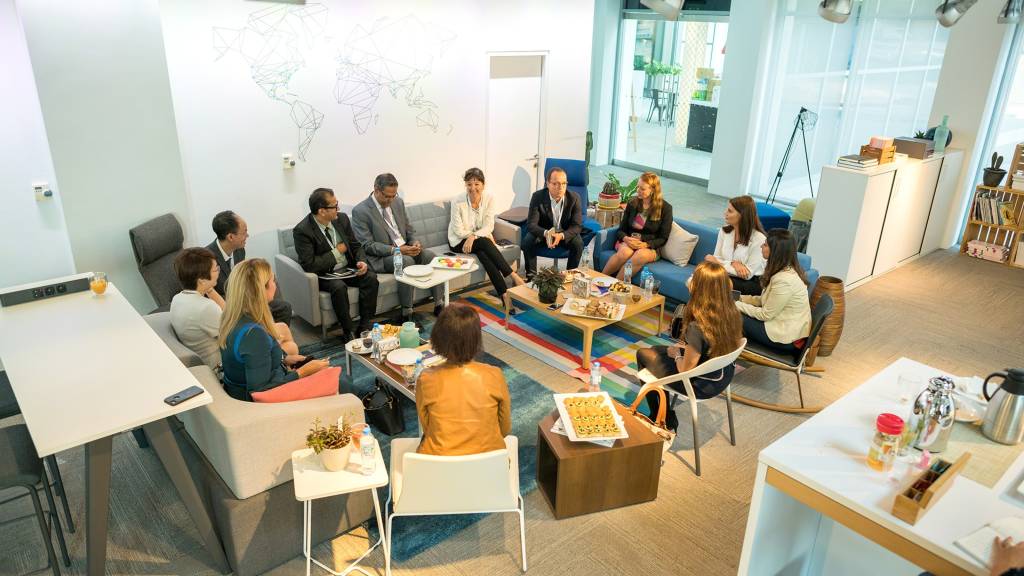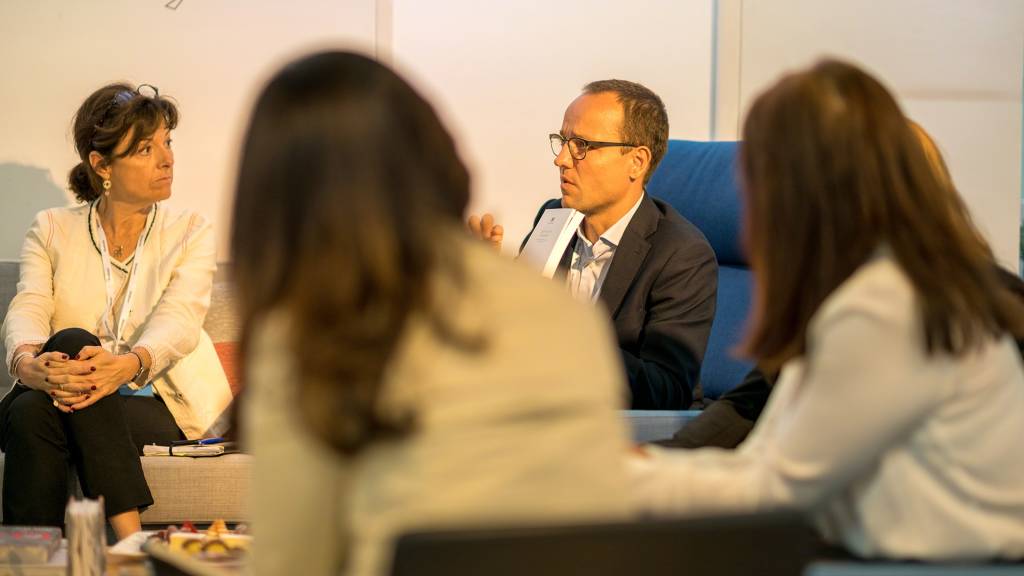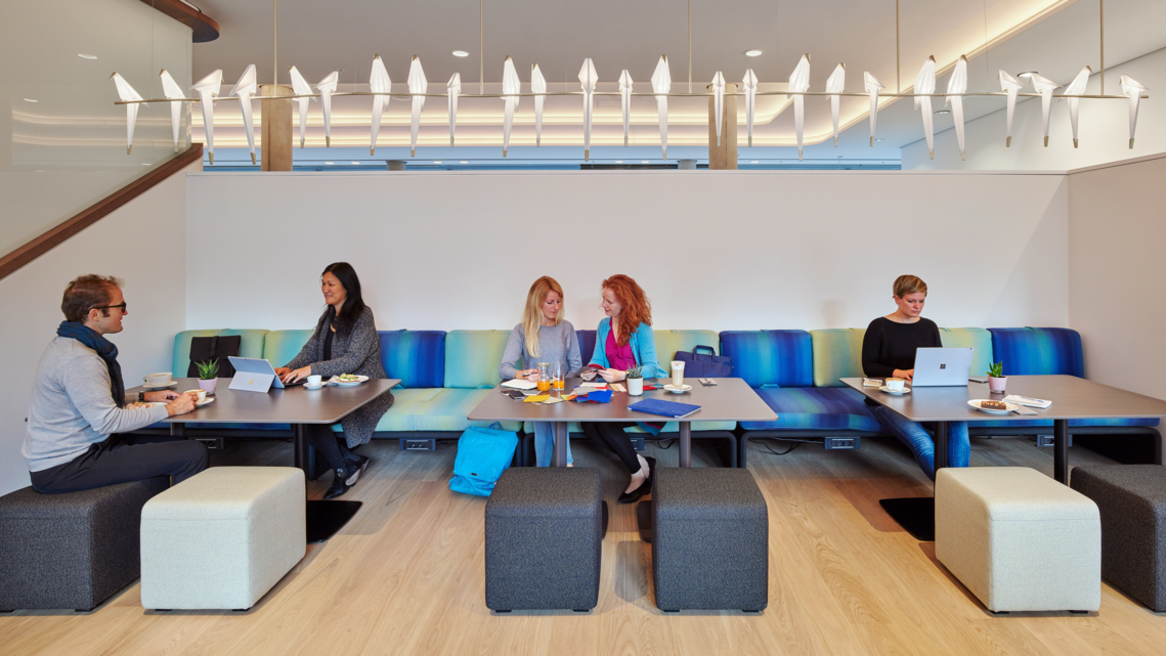HR Advocates Help Create the Right Work Space
Human resources professionals are crucial to developing a workplace people enjoy and that helps them be their most productive.
What is the cost of not attracting the right people with the right skills to your company? What’s the cost of high turnover? Or frequent absences due to illness? Human resources (HR) professionals know the value of addressing common employee-related issues. Leaders from multi-national and government organizations as well as major recruitment agencies came together at the Steelcase WorkLife Center in Dubai to share how the physical environment can be a tool to improve employee engagement with guidance from HR.
Win-Win Opportunity
“Human resources needs to be strategic, not just transactional and operational,” said Kimi Sokhi, senior manager of engagement & wellness, HR workforce & volunteers at Expo 2020. When organizations focus on efficiency, employees can be asked to do the work of more than one person and feel increasing pressure to boost productivity. Yet, research tells us more than one-third of people in the world’s largest economies are disengaged at work (Steelcase Global Report: Engagement and the Global Workplace). Human resources leaders asked: What if instead of applying more pressure, we could improve engagement?
For Expo 2020, an opportunity to address employee engagement arose when they decided to change locations. “We have a new building we’re moving into soon. I made sure to be part of the discussion when leadership, facilities and real estate were talking about the physical space,” said Sokhi. Procurement looks at the commercial aspect of the space, she says. Real estate focuses on getting the most use out of the area. Human resources, she emphasizes, gives a voice to the wellbeing of employees — the need for ergonomics and collaborative areas for building relationships.

“We don’t want to make changes to the space or simply add more workstations without considering the impact on the people working there,” says Karin Vidic, Steelcase human resources director for Europe, the Middle East and Africa (EMEA). “We have to consider the company’s plans. Does the space need to be flexible to accommodate a change in workforce? Do people need to be at individual desks all day? Or is a more flexible, mobile space better suited to the ways people are working? When all the factors are considered, it can be a win-win for everyone.”
What People Want
The Steelcase Global Report is the first research of its kind to show a clear correlation between highly engaged employees and people who are highly satisfied with their work environment. In fact, the most satisfied workers have a lot of choice and control over where they get their work done. Recent Steelcase research revealed 53 percent of people say they can’t find the right type of spaces they need at work and 40 percent say they don’t have enough informal spaces (See infographics). Recruiters at the roundtable reinforced that idea.
“When I am out trying to get the best talent into people’s businesses, the work space is a main factor. It works hand-in-hand with culture,” says Daisy Smith, Charterhouse associate director. “The best talent, millennial candidates, don’t want to walk in every day to an office with four white walls and sit in the same desk. They want flexibility to work in different spaces.”
Creating Happy Places

Sokhi pointed to Dubai government agencies as leading the way in flexibility. “If you haven’t seen the Knowledge and Human Development Authority offices, they are absolutely fantastic,” she said. There are no desks, even for senior leaders. The director general visited companies in Silicon Valley and came back so inspired they decided to completely renovate two floors. “They want to inspire people and want them to love coming to work. Their whole focus is on happiness.”
Vidic shared how Steelcase’s new Learning and Innovation Center (LINC) in Munich is designed to offer people choices and maximize space in an urban city center. The LINC’s design intentionally promotes movement and posture changes. People can choose from a variety of environments depending on their task, technologies or state of mind. It includes a WorkCafé which transforms a traditional dining area into a dynamic place to collaborate, connect and get work done throughout the day.
It’s the Little Things
By getting input from human resources, small changes can make a difference. Minoshka Correa, Johnson & Johnson global health services lead for the Middle East, shared the result of a close collaboration between her company’s facilities, procurement and health services teams. The health of its employees is an important goal for Johnson & Johnson. To promote a more active workday, employees whose roles require them to be seated at their desk for most of the day can choose to sit or stand using height-adjustable desks. And, they’ve recently added pods in some spots in the office. These include lightweight, height-adjustable stools with side handles. The stools are designed to be slightly unstable to provide a mild core workout for whoever is sitting in them.
Leading the Way
Human resources can also play a key role in helping leaders embrace new ways of working. Sama Zhangzhiqian, UAE administrative director with tech-giant Huawei, worked with leaders to create a more open, collaborative furniture in one of their offices. Previously, employees had said they were hesitant to knock on a manager’s door to ask questions or have a conversation. The new design brought leaders into the open which was a big shift. Zhangzhiqian helped the transition with communication about why the company was making the change and the positive benefits of the new design.
All the experts agreed the work environment should always be evolving. It shifts as organizations change and people work differently. They also concluded that the environment is better when human resources plays a strategic role to help people and the company reach its goals.


